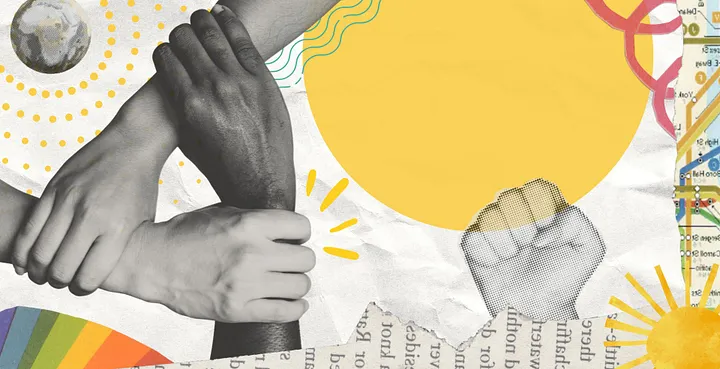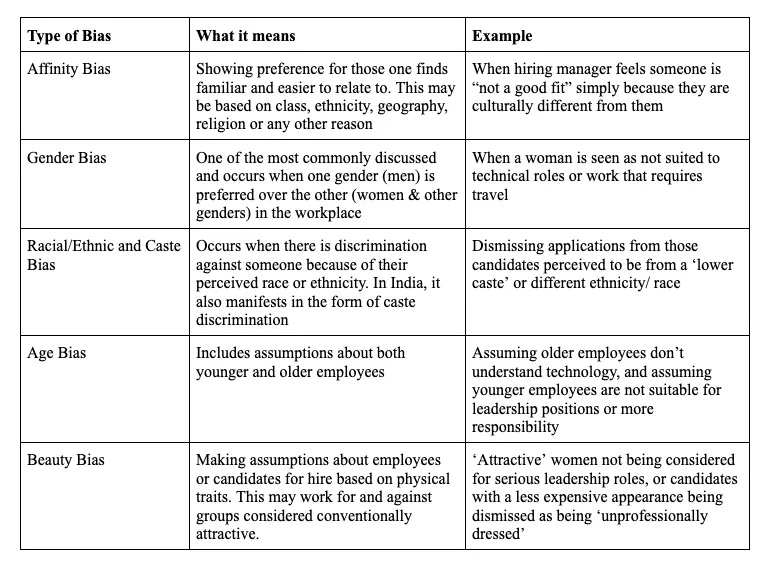
Imagine you have two minutes to draw a sunset. Does it look like something like this?

A sun between two hills, maybe with a river in between? How different does your art look compared to the sunset that you see nearly every day outside of your window?

In the pictures above, we see a stark difference. Think about it — why do we choose to draw something we learned about when we were in kindergarten, rather than a scene that we see from our homes for years? The first thought of a sunset, or the gut feeling of what you draw stems from years of being conditioned as a child to draw sunsets in a certain manner. Even though this was your instinctive reaction, or these kinds of sunsets are what your brain automatically thinks of, it is very different from the reality that we see everyday. This is a simple exercise that we used during the start of the #DEIforDevelopment forum to highlight how pervasive unconscious biases can be.
What is unconscious bias?
Unconscious bias or implicit bias is an implicit preference for, or an aversion towards a particular person or entity. It is a term that describes the associations we hold, outside our conscious awareness and control. These unconscious attitudes and stereotypes impact our understanding, actions, and decisions in an oblivious way.
Although there is a significant difference between explicit prejudice and unconscious bias, one does influence the other. Unconscious bias stems from two areas. The first is cultural — people learn and pick up cues from their human experience and social conditioning. Factors like culture, media portrayals, societal morals, family upbringing, etc. unconsciously shape our minds and attitudes. So, if we live in a society where explicit prejudice prevails, even if we do not believe in these prejudices or stereotypes, they can impact and influence our unconscious beliefs.
The second is neurological. The human brain naturally seeks out patterns and associations in information processing. The human ability to store, process, and apply information significantly depends on forming associations. Additionally, the brain strives to take shortcuts to simplify the world and make it easier and faster to process all the data. However, due to social conditioning, the shortcuts that we take may be riddled with unconscious biases. Meaning, if we repeatedly see men in certain job roles, and women in others, our brain will pick up on the pattern and learn that.
Unconscious bias at work
In the context of work, unconscious bias can create a variety of workplace tensions and may be difficult to mitigate, because oftentimes those involved may not be aware it is happening at all. It may manifest itself in various forms and influence key decisions and behavior in the workplace. Some of the common types of biases that show up and may affect decision making and interactions at work include but are not limited to:

Your daily wages
I am lucky that I am doing what I like — learning a bit every day. However, let me reiterate this — paid work is something people do for pay — people work to fend for themselves and/or their dear ones or to earn money and do something they like later in life and so on. So, work need not be as exciting (or boring) as other parts of life can be. There are people who like to finish their work for the day and do something they enjoy for the rest of whatever is left of the day and week and month and lifetime. Again, as I said in the beginning, some of it ties up to why people choose to work in an organization like GBL that has found its sweet spot (worker well-being and business interests). Each of us must find that sweet spot (income, growth, opportunities or balance, satisfaction or values) or keep looking for one in this journey of life. As the dictionary says, a sweet spot is “an optimum point or combination of factors or qualities”. The optimum point and its qualities themselves change and evolve as we keep journeying.
Biases exist and ongoing DEI efforts across industries are seeking to root out these issues. But what about the development sector- those that work in the social-impact field? Does working on programs that promote equity and social justice preclude unconscious bias?
Development professionals may believe that this may not be as big an issue in the sector since they are in fact working against the forces that cause unconscious bias. However, the evidence says otherwise:
- In 2015, while people of color represented 30% of the American workforce, only 18% of non-profit staff and 22% of foundation staff were people of color.
- According to BoardSource, men held the sector’s highest paying jobs despite 3 in 4 non profit CEOs in 2014 being women.
- A 2012 study by the Greenlining Institute found that “communities of color receive less than 5% of all charitable donations from the more than 72,000 foundations in the country.”
This has wide-ranging effects. From the lack of voices from the very populations the sector seeks to assist, unconscious bias can also influence social workers’ decision making and create an effective barrier to support. This is commonly observed in a number of ways, including
- confirmation bias at work and in programme implementation, i.e. when individuals selectively gather (or give differential weight to) certain information in order to support a previously held belief
- when development practitioners do not fully understand the mindset and circumstances of those they are trying to help and fill the gaps with their own assumptions and perceptions
- thin simplification, i.e. to apply standardized management tools and uniform approaches to complex issues without an understanding of local context and need
In India, we anecdotally observe that similar trends prevail with the underrepresentation of marginalized and underprivileged communities in the social-impact sector. In fact, caste, class, gender and sexuality all play a role in the unconscious bias manifested across sectors. A 2020 survey conducted by JobBuzz noted that 33% of Indians face biases that are age-related, 17% physical appearance related and 15% religion/ culture related.
Changing Things for the Better
While both data and experience points to unconscious bias as a prevalent and systemic issue at workplaces, the key to changing things is a two step approach — coming to terms with the existence of these biases, and figuring out how we can neutralize them. Realizing that we all have an unconscious bias does not mean that we need to continue to remain biased. While addressing these biases remains a difficult challenge, ongoing research and efforts to increase awareness and understanding of unconscious bias offer hope for a more equitable and just society in the future. Some small but important steps include (but not limited to):
- Expectation Setting by letting employees know that the organization values diversity, equity and inclusion through diversity statements, culture policies / norms and using relevant terminology
- Clear and objective criteria for evaluations for hiring & promotions — This helps to bypass unconscious bias that hiring managers or performance evaluators may have towards the candidates.
- Intentional outreach and recruitment such as by using inclusive language in the Job Descriptions and ensuring diverse hiring committees as well as hiring pools
- Making leadership accountable for the organization’s values
- Providing training and sensitization to both management and employees
- Providing culturally and socially sensitive mental health services
For us at Good Business Lab, we acknowledge the realities of unconscious bias and seek to be intentional about changing these patterns internally and also, sparking positive change in the space we occupy as development sector employers externally. This attempt included the #DEIforDevelopment forum, a multi-stakeholder platform to discuss actionable points towards correcting some of the DEI challenges we find are rooted in unconscious biases. Further, from affirmative action hiring to objective evaluation systems — GBL continues to put DEI into action even as we continue to learn.
In the next blog this July, we will examine hiring practices in India’s development sector through this very lens of DEI.
This blog is co-written by Bethamehi Joy Syiem and Sanj Saxena with contributions from several employees at Good Business Lab.
If you would like to share any thoughts or have any questions, reach out to us at info@goodbusinesslab.org.